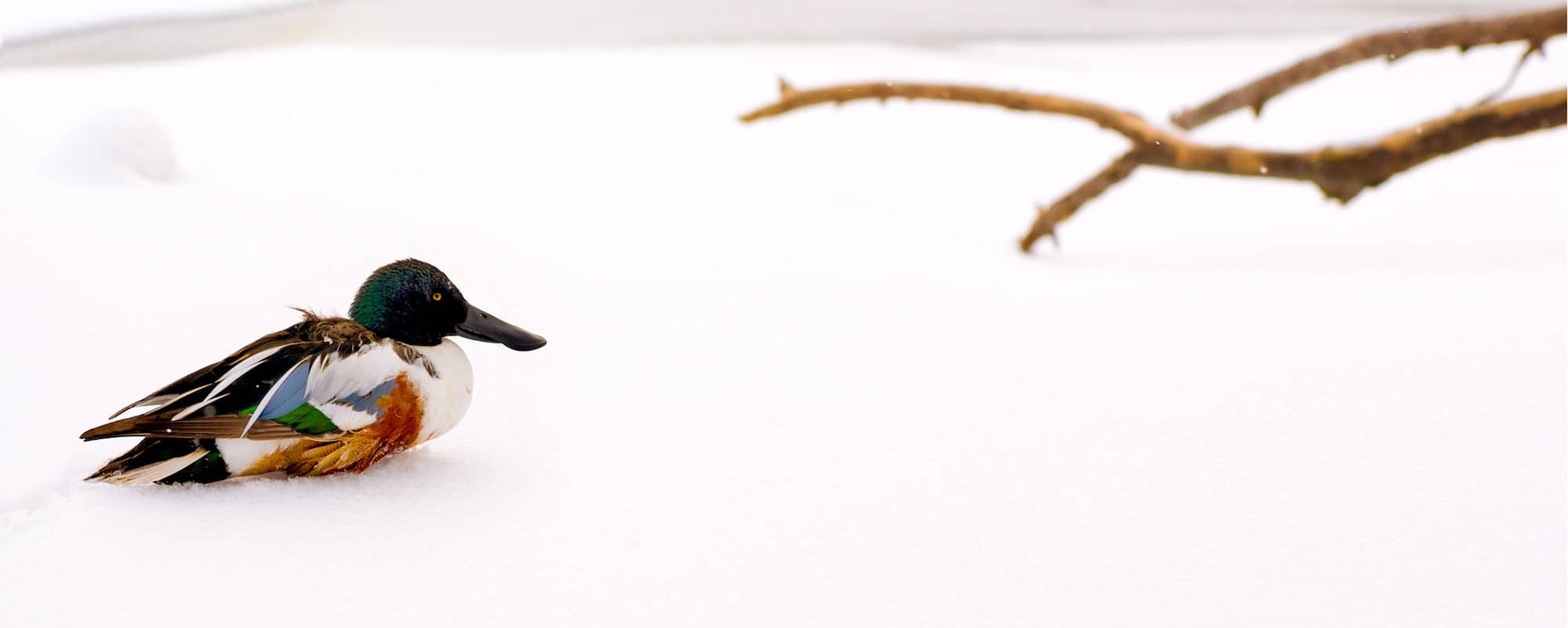Where Do The Animals Go In Winter?
November 13, 2019
Like Holden Caulfield before us, we’re asking, “where do the ducks go in the winter?” In fact, we want to know how all of Prospect Park’s year-round animal residents survive the season when temperatures dip below freezing. Read on below, and make sure to join Prospect Park Alliance at the Audubon Center to learn more about the park’s animal inhabitants.
Chipmunks
Prospect Park is home to one of the only populations of chipmunks in Brooklyn. As days get shorter and temperatures begin to fall, chipmunks shore up their underground burrows, cache enough food to get them through winter, and hibernate. Their body temperature drops as low as 40 degrees, and their heart rate slows as low as 4 beats a minute! Chipmunks don’t spend the whole winter asleep. Every few days they awaken, eat some of their stored food, go to the bathroom and curl back up to wait for spring.
Turtles
Visitors to Prospect Park’s Lake are used to seeing turtles—often red-eared sliders—basking on sunny rocks and logs in summertime. When winter comes these creatures do not hibernate, but “brumate” at the bottom of the Lake: remaining active while adjusting their bodies to the freezing conditions. As the temperature drops their blood thins, and they require less energy to move blood around their body. Consequently, they only need to eat, drink and breathe enough to barely keep the body going. It is not an uncommon sight to see a red-eared slider ambling around a pond floor under inches of ice!
Birds
Birds can be seen enjoying Prospect Park’s 585 acres year round, but not all birds enjoy the winter weather. Many species of birds make themselves scarce when the colder weather arrives, heading for southern latitudes. However, plenty of birds have adapted to make the most of the cooler temperatures. During these months, they spend their days searching for food and staying warm. Their uninsulated feet are largely freeze-resistant, and by fluffing out their feathers—often appearing to double in size—the birds stay warm. Keeping their body temperature consistent requires lots of fuel, and they are usually on the hunt for their next meal.
Many ducks stay in the park all winter long, enjoying the Lake’s freezing waters. These ducks are extremely hardy, due to a thick layer of fat and down under their waterproof feathers.

A Northern Shoveler on Prospect Park Lake, c. Joseph O. Holmes
Fish
Prospect Park’s Lake is filled with fish, and as cold-blooded creatures, their metabolism dips when temperatures take a dive. In this resting state, fishes’ hearts slow down, their needs for food and oxygen decrease, and they move about very little. As ice forms on top of a lake, warm water sinks, and fish gather in groups near the bottom to stay warm. Some species burrow into the mud and go dormant, while other fish school together in “wintering holes” in deep pockets of the Lake.
Squirrels
Used to seeing squirrels in the park year round? That’s because squirrels are “homeotherms,” their body temperature does not fluctuate so they do not hibernate. Before winter arrives, squirrels can be seen hiding stashes of food in shallow holes and covering it up. When food becomes scarce, they will return to these locations and dig up a meal. To minimize exposure, squirrels spend less time outside their dens during the colder months, and it’s common for several squirrels to share a den, allowing them to take shelter and keep each other warm.
Frogs
Frogs live in a variety of environments in the park, and likewise have a variety of ways of coping with the cold temperatures. Some aquatic frogs spend the winter at the bottom of the Lake, with a slowed-down pace and metabolism like fish and turtles. Others burrow into the ground and hibernate the winter away. And some frogs, like spring peepers—loud tree frogs—can freeze solid! They stop breathing and their hearts stop beating, but high concentrations of glucose in their blood acts as a natural antifreeze, allowing their bodies to stay safe until they thaw in warmer weather.